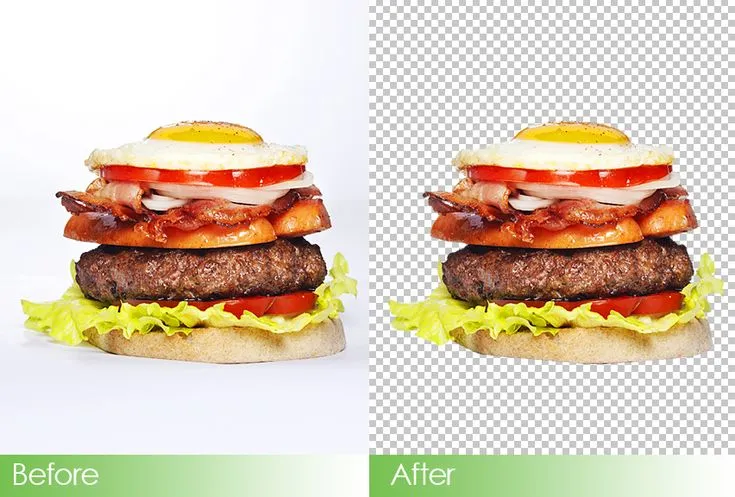10 Common Mistakes to Avoid When Using Clipping Path Services

Clipping path services are important apparatuses for businesses looking to improve their visual substance. Whether it’s for item photography, e-commerce postings, or limited-time materials, clipping way administrations can offer assistance make fresh, proficient pictures that capture the audience’s consideration. Be that as it may, like any other benefit, there are common botches that businesses ought to dodge to guarantee the best comes about. Let’s investigate ten of these botches and how to control and clear them.
1. Ignoring Image Resolution
One of the most common botches when utilizing clipping way administrations is disregarding the altered images’ determination. Low-resolution pictures can result in pixelation and misfortune of detail, indeed after altering.
How to Avoid:
- Always provide high-resolution images to clipping path service providers.
- Check the resolution requirements of your intended end-use (e.g., print or web) and ensure images meet those standards.
2. Rushing the Process
Clipping path services require precision and attention to detail. Rushing through the process can lead to sloppy editing and unsatisfactory results.
How to Avoid:
- Allow ample time for the editing process to ensure thoroughness and accuracy.
- Communicate realistic deadlines with the clipping path service provider to avoid unnecessary rush.
3. Neglecting Communication
Effective communication between businesses and clipping path service providers is essential for achieving desired outcomes. Neglecting to communicate specific requirements or preferences can result in misunderstandings and subpar results.
How to Avoid:
- Communicate your expectations, preferences, and any specific instructions to the clipping path service provider.
- Maintain open lines of communication throughout the editing process to address any concerns or revisions promptly.
4. Overlooking Complexity

Refraining from underestimating the complexity of editing requirements can lead to underwhelming results. Certain images may require more intricate clipping paths or adjustments beyond basic editing.
How to Avoid:
- Provide comprehensive briefs and sample images to help the clipping path service provider understand the level of complexity involved.
- Discuss any special requirements or challenges upfront to ensure they are addressed effectively.
5. Failing to Review Samples
Before entrusting a clipping path service provider with a large volume of work, it’s essential to review samples of their previous work to assess quality and suitability.
How to Avoid:
- Request samples or portfolio showcases from potential clipping path service providers.
- Evaluate the quality of their work, attention to detail, and ability to meet specific requirements before making a decision.
6. Over-editing
Comparable to picture determination, over-editing can diminish the quality and realness of pictures. Over-the-top altering, such as forceful honing or unreasonable color alterations, can make pictures show up unnatural.
How to Avoid:
- Exercise restraint when applying editing techniques, opting for subtle adjustments that enhance rather than overpower the original image.
- Maintain a balance between improving image quality and preserving its authenticity.
7. Neglecting Quality Control
Failing to perform thorough quality control checks before finalizing edited images can result in overlooked errors or inconsistencies.
How to Avoid:
- Implement a structured quality control process that includes reviewing edited images for accuracy, consistency, and adherence to specifications.
- Involve multiple team members or stakeholders in the review process to catch any potential issues before final delivery.
8. Disregarding File Formats

Diverse record groups serve distinctive purposes, and choosing the off-base organize can influence picture quality and compatibility with aiming stages or applications.
How to Avoid:
- Understand the requirements of your intended use (e.g., web, print, social media) and select appropriate file formats accordingly (e.g., JPEG, PNG, TIFF).
- Consult with the clipping path service provider to ensure edited images are delivered in the correct format for your needs.
9. Underestimating Turnaround Time
Clipping path services require time and effort, and underestimating the turnaround time needed for editing can lead to delays and frustrations.
How to Avoid:
- Plan and provide ample lead time for editing projects to avoid last-minute rushes.
- Communicate realistic deadlines with the clipping path service provider and factor in additional time for revisions or unexpected delays.
10. Ignoring Feedback
Feedback from stakeholders or end-users is invaluable for improving the effectiveness of clipping path services. Ignoring feedback or failing to incorporate suggested changes can hinder progress and limit the impact of edited images.
How to Avoid:
- Solicit feedback from relevant parties, such as marketing teams, designers, or customers, to gather insights and identify areas for improvement.
- Actively listen to feedback and implement constructive suggestions to enhance the quality and effectiveness of future editing projects.
By avoiding these common mistakes when using clipping path services, businesses can ensure a smoother editing process and achieve high-quality results that effectively enhance their visual content. Effective communication, attention to detail, and collaboration with experienced clipping path service providers are key to unlocking the full potential of this valuable editing tool.